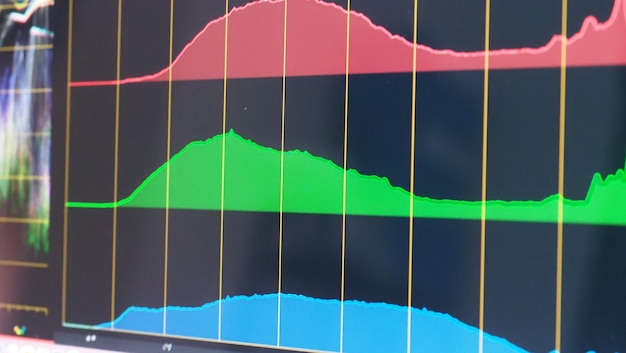High-Yield Bonds: Balancing Risk and Reward in Today’s Market

High-yield bonds, also known as junk bonds, offer potentially higher returns, such as the current 8% interest rates, but come with increased risk, especially in volatile markets, making it crucial for investors to carefully weigh the potential benefits against the possibility of default and capital loss.
Are you considering investing in high-yield bonds: Are the Current 8% Interest Rates Worth the Increased Risk in a Volatile Market?? These bonds promise attractive returns, but is the risk worth it? Let’s delve into the complexities of high-yield bonds and explore whether they align with your investment strategy, offering you insights into navigating the current market volatility and making informed decisions.
Understanding High-Yield Bonds
High-yield bonds, often referred to as “junk bonds,” are debt securities issued by companies with lower credit ratings. These companies are considered to be at a higher risk of default, which is why their bonds offer higher interest rates to compensate investors for this increased risk.
What Makes a Bond High-Yield?
A bond is classified as high-yield when it’s rated below investment grade by credit rating agencies such as Moody’s, Standard & Poor’s (S&P), and Fitch. These ratings indicate a higher probability of default compared to investment-grade bonds.
Key Characteristics of High-Yield Bonds
- Higher interest rates: To attract investors, high-yield bonds offer significantly higher interest rates than safer, investment-grade bonds.
- Increased risk of default: Issuers of high-yield bonds are considered to have a higher risk of not being able to meet their debt obligations.
- Market sensitivity: High-yield bonds are more sensitive to economic conditions and market sentiment than investment-grade bonds.
Understanding these key characteristics is crucial for investors considering adding high-yield bonds to their portfolio. It’s important to assess your risk tolerance and investment goals before diving into this asset class.

The Appeal of 8% Interest Rates
The current economic environment has led to some high-yield bonds offering interest rates around 8%. This can be an attractive prospect for investors seeking higher returns in a low-yield environment. However, it’s crucial to understand the factors driving these high rates and the potential risks involved.
Factors Contributing to High Interest Rates
- Economic uncertainty: Periods of economic uncertainty and market volatility can push high-yield bond rates higher.
- Increased default risk: Companies with lower credit ratings may need to offer higher rates to attract investors during challenging times.
- Supply and demand: The supply of high-yield bonds and investor demand can influence interest rates.
Potential Benefits of Investing in High-Yield Bonds
While the risks are significant, high-yield bonds can offer several potential benefits for investors who understand and are comfortable with the associated risks.
High-yield bonds can boost portfolio returns, provide diversification (as they tend to have a low correlation with other asset classes), and offer income for investors willing to stomach possible volatility.
Assessing the Risks in a Volatile Market
Investing in high-yield bonds always involves risk, but these risks are amplified in a volatile market. It’s essential to carefully evaluate these risks before making any investment decisions.
Understanding Default Risk
Default risk refers to the possibility that the issuer will be unable to make timely interest or principal payments. This risk is higher for high-yield bonds compared to investment-grade bonds.
The Impact of Economic Downturns
Economic downturns can significantly increase the risk of default for high-yield bond issuers. During recessions, companies may struggle to generate revenue and meet their debt obligations.
Market Liquidity and Volatility
High-yield bonds can be less liquid than investment-grade bonds, meaning it may be more difficult to sell them quickly at a fair price. Market volatility can also lead to sharp price declines.

Evaluating the Issuer’s Financial Health
One of the most crucial steps in assessing the risk of high-yield bonds is to carefully evaluate the financial health of the issuer. This involves analyzing their financial statements, credit ratings, and industry outlook.
Analyzing Financial Statements
Reviewing the issuer’s balance sheet, income statement, and cash flow statement can provide valuable insights into their financial stability. Look for trends in revenue, earnings, and debt levels.
Understanding Credit Ratings
Credit ratings assigned by agencies like Moody’s and S&P provide an independent assessment of the issuer’s creditworthiness. Pay close attention to the rating and any recent changes.
Assessing the Industry Outlook
Consider the industry in which the issuer operates. Is the industry growing or declining? What are the key trends and challenges facing the industry?
By thoroughly evaluating the issuer’s financial health, investors can gain a better understanding of the risks involved and make more informed investment decisions.
Diversification and Portfolio Allocation
Diversification is a key strategy for managing risk in any investment portfolio, especially when dealing with high-yield bonds. It’s important to allocate a portion of your portfolio to high-yield bonds that aligns with your risk tolerance and investment goals.
The Importance of Diversification
Diversifying your investments across different asset classes and industries can help reduce the impact of any single investment on your overall portfolio.
Determining the Right Allocation
The appropriate allocation to high-yield bonds will depend on your risk tolerance, investment time horizon, and overall financial situation. Consult with a financial advisor to determine the right allocation for you.
Other Considerations
- Rebalancing: Periodically rebalance your portfolio to maintain your desired asset allocation.
- Monitoring: Regularly monitor your investments and make adjustments as needed based on changing market conditions.
Diversification and proper portfolio allocation are essential for managing the risks associated with high-yield bonds and achieving your investment goals.
Alternatives to High-Yield Bonds
If the risks associated with high-yield bonds seem too daunting, there are other investment options that may offer a more suitable risk-reward profile.
Investment-Grade Bonds
Investment-grade bonds are considered to be safer than high-yield bonds, but they typically offer lower interest rates.
Dividend-Paying Stocks
Dividend-paying stocks can provide a steady stream of income and potential capital appreciation.
Real Estate Investment Trusts (REITs)
REITs invest in real estate and distribute income to shareholders in the form of dividends.
There are several alternatives to high-yield bonds that may be more appropriate for risk-averse investors. It’s important to carefully consider your investment goals and risk tolerance before making any investment decisions.
Conclusion
High-yield bonds: Are the Current 8% Interest Rates Worth the Increased Risk in a Volatile Market? The lure of an 8% interest rate on high-yield bonds can be tempting, but it’s vital to recognize the heightened risks involved, particularly in a volatile market. Thorough research, understanding the issuer’s financial stability, appropriate diversification, and aligning investments with your personal risk tolerance are key to navigating the high-yield bond landscape successfully. Remember to consider alternative investments and consult with a financial advisor to make informed decisions.
| Key Point | Brief Description |
|---|---|
| ⚠️ Higher Risk | High-yield bonds carry significant default risk, especially in volatile markets. |
| 💰 Higher Returns | They offer potentially higher interest rates compared to safer investments. |
| 🔍 Due Diligence | Thoroughly evaluate the issuer’s financial health before investing. |
| 📊 Diversification | Diversify to mitigate risk and allocate according to risk tolerance. |
FAQ
▼
High-yield bonds, also known as junk bonds, are bonds issued by companies with lower credit ratings. These bonds offer higher interest rates to compensate investors for the increased risk of default.
▼
The main risks are default risk (the issuer can’t pay), market risk (bond prices fluctuating), and liquidity risk (difficulty in selling). Economic downturns exacerbate these risks.
▼
Analyze financial statements (balance sheet, income statement, cash flow), check credit ratings by agencies like Moody’s and S&P, and assess the industry outlook.
▼
Diversification involves spreading investments across different categories to lower risk. For high-yield bonds, it’s crucial due to their higher risk, helping offset potential losses.
▼
Yes, including investment-grade bonds (safer but lower yield), dividend-paying stocks (potential for growth & income), and REITs (real estate income).
Conclusion
In conclusion, while the 8% interest rates offered by high-yield bonds can be attractive, especially in the current market, it’s imperative to carefully consider the associated risks. By conducting thorough research, evaluating the financial health of issuers, and diversifying your portfolio, you can make informed decisions that align with your investment goals and risk tolerance.





